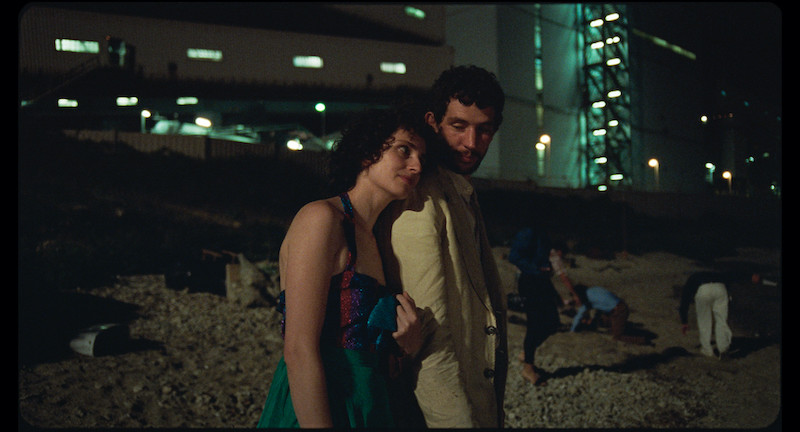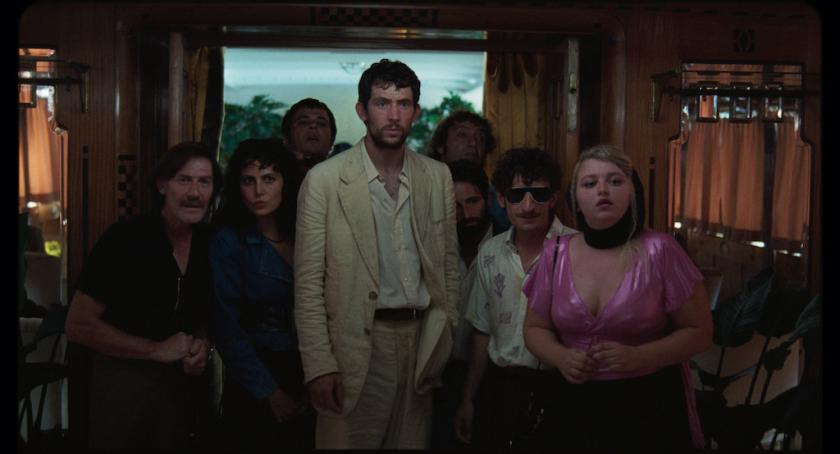Italian director Alice Rohrwacher (The Wonders, Happy as Lazarro), ploughs a charmingly idiosyncratic furrow that might be described as magical realism, combining as it does vivid depictions of rural communities with shafts of fantasy and fable.
Her latest, La Chimera, again defies easy categorisation. Its difference is beguiling, the playfulness and mysteriousness accompanied by warmth and wisdom, and a performance by Josh O’Connor that, alongside his turn in the very different Challengers (directed by another Italian, Luca Guadagnino) confirms him as one of the most versatile and intriguing actors of his generation.
O’Connor plays Arthur, an Englishman abroad and, in a sense, out of time. With his white linen suit and reticent manner, Arthur could be a character from a Merchant Ivory film, conducting a Grand Tour through Europe. Instead, this is the 1980s, and he’s decidedly on the other end of the social spectrum, penniless and stuck in this one part of Italy, somewhere along the Tuscan and Lazio coastline.
We first meet him on a train, newly released from prison (his crime never disclosed, but probably akin to his subsequent misdemeanours) and returning to his makeshift home, a derelict hut in the side of a mountain by the sea. Rohrwacher never explains how Arthur first arrived here, but the inference is that he came as an archaeologist to an area rich with Etruscan sites and buried artefacts, fell in love and, when his lover died, lost himself entirely. The man is stuck, haunted by the past, both his own and the ancient. He has also become a local celebrity amongst the tombaroli, the graverobbing gangs who sell their ill-gotten wares to the black market. Arthur, aka The Englishman, aka Arthur the Dowser, has a gift for locating this buried treasure. In this impoverished area, the ancient loot is a much-needed source of income; but Arthur searches for something other than cash in these subterranean tombs, his chimera, some kind of connection to the afterlife and his dead love, Beniamina.
He has also become a local celebrity amongst the tombaroli, the graverobbing gangs who sell their ill-gotten wares to the black market. Arthur, aka The Englishman, aka Arthur the Dowser, has a gift for locating this buried treasure. In this impoverished area, the ancient loot is a much-needed source of income; but Arthur searches for something other than cash in these subterranean tombs, his chimera, some kind of connection to the afterlife and his dead love, Beniamina.
The great Isabella Rossellini is a little under-used here as Flora, Beniamina’s wheelchair-bound mother, whose large but now leaky and dilapidated house is another symptom, along with a disused train station that will adopt significance, later in the film, of an entire area falling into decay. Like Arthur, Flora clings to Beniamina’s memory, while her other daughters descend, vulture-like, with their eyes on the house.
The plot, such as it is, concerns Arthur’s gang’s latest graverobbing spree, always one step ahead of the local police and in rivalry with other tombaroli, and his tentative romance with Italia (Carol Duarte, pictured above, with O'Connor), a would-be singer who frequents Flora’s home as part-pupil, part-exploited servant. “You’re flat,” Flora will bark. “Go do the ironing.”
But Italia has her own way of extracting value from their arrangement. And she also acts as the conscience in the film, outraged at the sacrilegious raiding of sacred items that have been placed in tombs to keep company with the souls of the dead.
For Arthur’s dreams and reveries, involving his former love, Rohrwacher switches to 16mm and a boxier screen ratio. It’s one of many tricks she employs to colour her storytelling and keep the audience on its toes, including speeding up the action (giving the gang’s shenanigans a kind of silent-era comic gusto), and using diegetic music, notably ballads that are sung by the characters and inform the tone and energy of some fabulous sequences.
Thematically, Rohrwacher explores the rub between modernity and antiquity, the sacred and the secular, superstition and economic reality. There’s arch satire in the dealings between the tombaroli and their rich and shady art world patrons (their dealer is played by Alba Rohrwacher, the director’s sister and frequent collaborator), and plain eccentricity, as when one character exclaims straight to the camera: “If the Etruscans had still been here, there wouldn’t be all this machismo in Italy.”
I also feel Fellini at play, in the film’s coastal setting, its musicality (especially the use of brass bands), the carnival setting of some scenes, and its warm embrace of rascals and ragamuffins. And O’Connor’s Arthur has the petulant, reluctant charisma of many a Fellini hero.
Indeed, the actor is a revelation. He has the clotheshorse allure of a leading man, and the nuance and surprise of a seasoned character actor, wholly convincing as someone who’s lost their cultural identity, or abandoned it, for a life that verges on the destitute. He also flits easily between being withdrawn, distracted, and highly dynamic when he senses the presence of a new tomb. The actor speaks very good Italian, too, though the character is often sweetly corrected by others, a reminder of his otherness.














Add comment